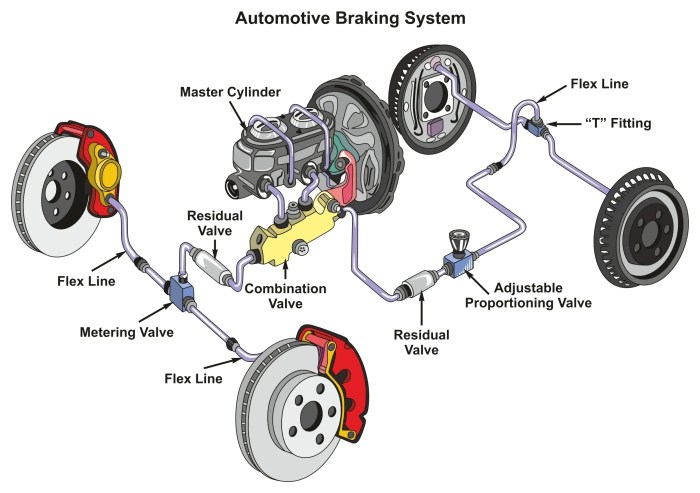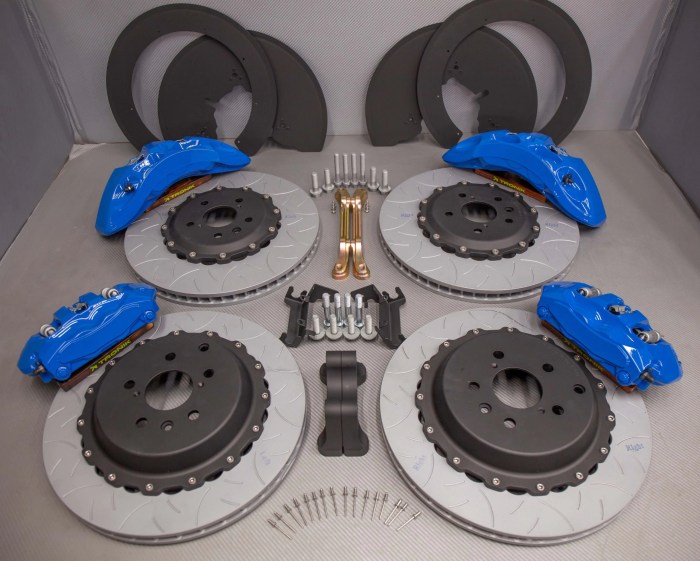Jeep brake system parts are crucial for safe and reliable operation. Understanding their function and maintenance is vital for any Jeep owner, whether tackling off-road adventures or navigating city streets. This guide delves into the key components of the Jeep braking system, explaining their roles and providing insights into common issues and preventative maintenance. We’ll explore everything from brake pads and rotors to calipers and master cylinders, offering a comprehensive overview for both novice and experienced Jeep enthusiasts.
Proper maintenance of your Jeep’s brake system is paramount for safety. Regular inspections, timely replacements of worn parts, and adherence to manufacturer’s recommendations will ensure optimal braking performance and extend the life of your vehicle’s braking components. Ignoring these aspects can lead to reduced braking efficiency, increased stopping distances, and potentially dangerous situations.
Jeep vehicles, renowned for their off-road capabilities and ruggedness, rely on a robust braking system to ensure safe and controlled stops, even in challenging terrains. Understanding the components of this system is crucial for both maintaining optimal performance and troubleshooting potential issues. This comprehensive guide delves into the intricacies of Jeep brake system parts, providing detailed information for Jeep owners and enthusiasts alike.
Key Components of the Jeep Brake System: Jeep Brake System Parts
The Jeep brake system, like most modern vehicles, is a complex interplay of several crucial components working in harmony. These components can vary slightly depending on the Jeep model and year, but the core principles remain consistent.
1. Brake Pedal and Master Cylinder

The Starting Point
The brake pedal is the driver’s primary interface with the braking system. When pressed, it activates the master cylinder, a hydraulic pump that generates the pressure needed to engage the brakes. Regular inspection for leaks and proper fluid levels is crucial for master cylinder maintenance. Issues such as a spongy brake pedal often point to problems within the master cylinder or a low brake fluid level.
Regular brake fluid flushes are recommended to maintain optimal performance and prevent corrosion.
2. Brake Lines and Hoses
Delivering the Pressure
High-pressure brake lines, typically made of steel, and flexible rubber hoses transmit the hydraulic pressure from the master cylinder to the wheel cylinders or calipers. These lines are critical for maintaining consistent brake pressure throughout the system. Leaks in brake lines or hoses can lead to significant brake failure and should be addressed immediately.

Regular visual inspections for rust, cracks, or bulges are vital for preventative maintenance. Consider replacing brake lines as part of routine maintenance, especially in areas prone to corrosion.
3. Wheel Cylinders (Drum Brakes) and Calipers (Disc Brakes)
Stopping Power
Depending on the Jeep model and year, you’ll find either drum brakes or disc brakes (or a combination of both). Drum brakes utilize wheel cylinders that push brake shoes against the rotating drum to create friction and slow the vehicle. Disc brakes, on the other hand, employ calipers that squeeze brake pads against a rotating disc.
Disc brakes generally offer superior stopping power and fade resistance, particularly in demanding conditions. Regular inspection of brake pads and shoes for wear is essential, and replacement is necessary when they reach the minimum thickness.
4. Brake Rotors and Drums
The Friction Surfaces
Brake rotors (for disc brakes) and drums (for drum brakes) are the surfaces against which the brake pads or shoes create friction to slow the vehicle. Over time, these components wear down due to friction. Warped rotors can lead to vibrations in the brake pedal, while excessively worn drums can compromise braking effectiveness.
Regular inspection and replacement when necessary are vital for maintaining safe braking performance. Consider upgrading to high-performance rotors for improved stopping power and durability.
5. Brake Pads and Shoes
The Friction Material
Brake pads (for disc brakes) and shoes (for drum brakes) are the components that directly engage with the rotors or drums to create friction and slow the vehicle. They are made of various friction materials, each offering different levels of performance and lifespan. Regular inspection and replacement when worn are crucial for safe braking.
Choosing high-quality brake pads can significantly impact braking performance and longevity.
6. Parking Brake (Emergency Brake)
Added Security
The parking brake, also known as the emergency brake, is a separate braking system designed to hold the vehicle stationary. It typically operates on the rear wheels, either through cables connected to the rear brakes or through a separate drum brake system. Regular inspection of the parking brake cables and mechanism is necessary to ensure proper functionality.
A malfunctioning parking brake can pose a safety hazard.
7. Brake Booster
Assisting the Driver
The brake booster is a vacuum-assisted device that reduces the effort required by the driver to apply the brakes. It amplifies the force applied to the brake pedal, making braking easier and more responsive. A faulty brake booster can lead to a hard brake pedal and reduced braking performance. Regular inspection and maintenance are crucial for optimal performance.
8. Anti-lock Braking System (ABS)
Preventing Wheel Lockup
Many modern Jeeps are equipped with an Anti-lock Braking System (ABS), which prevents the wheels from locking up during hard braking. This allows the driver to maintain steering control during emergency stops. The ABS system includes sensors, a control module, and actuators that modulate brake pressure to individual wheels. A malfunctioning ABS system should be diagnosed and repaired by a qualified mechanic.
9. Electronic Stability Control (ESC)
Enhancing Stability
Electronic Stability Control (ESC), also known as Electronic Stability Program (ESP), is a safety feature that works in conjunction with the ABS system to enhance vehicle stability. It detects loss of traction and automatically applies brakes to individual wheels to help maintain control. ESC is a vital safety feature, particularly on off-road terrain.
Common Jeep Brake System Issues and Troubleshooting
Several issues can affect the Jeep brake system, ranging from minor inconveniences to major safety hazards. Early detection and proper maintenance are key to preventing serious problems.
- Spongy Brake Pedal: Often indicates low brake fluid, air in the lines, or a failing master cylinder.
- Hard Brake Pedal: May suggest a problem with the brake booster or a leak in the vacuum line.
- Brake Noise (Squealing, Grinding): Typically indicates worn brake pads or shoes.
- Brake Pedal Pulsation: Could be a sign of warped brake rotors.
- Brake Fluid Leaks: Requires immediate attention to prevent complete brake failure.
Maintaining Your Jeep’s Brake System: A Proactive Approach
Regular maintenance is crucial for ensuring the longevity and effectiveness of your Jeep’s brake system. This includes:
- Regular brake fluid flushes (every 2-3 years or as recommended by the manufacturer).
- Periodic inspection of brake pads and shoes for wear.
- Visual inspection of brake lines and hoses for leaks or damage.
- Regular inspection of the parking brake mechanism.
- Professional inspection of the entire brake system during routine maintenance.
Frequently Asked Questions (FAQ)
- Q: How often should I change my brake pads? A: Brake pad replacement frequency depends on driving habits and conditions. Consult your owner’s manual or a qualified mechanic for recommendations.
- Q: What does it mean if my brake pedal feels spongy? A: A spongy brake pedal often indicates low brake fluid, air in the brake lines, or a failing master cylinder. Immediate attention is required.
- Q: How can I tell if my brake rotors are warped? A: Warped brake rotors often cause pulsation or vibration in the brake pedal during braking. A mechanic can diagnose this issue.
- Q: What is the cost of replacing brake pads and rotors? A: The cost varies depending on the Jeep model, parts used, and labor costs. Obtain quotes from multiple mechanics before making a decision.
- Q: Can I replace my brake pads myself? A: While possible, brake pad replacement requires mechanical skills and tools. If unsure, consult a qualified mechanic.
Resources
- Jeep Official Website
- Mopar Parts Website
- (Add other relevant links to trusted automotive repair resources here)
Call to Action
Ensure the safety and performance of your Jeep by prioritizing regular brake system maintenance. Schedule a brake inspection with a qualified mechanic today!
FAQ Resource
What are the signs of failing brake pads?
Squeaking or grinding noises, a spongy brake pedal, increased stopping distance, and a pulsating brake pedal are all indicators of worn brake pads.
How often should I replace my brake fluid?
Brake fluid should be flushed and replaced every 2-3 years, or according to your Jeep’s owner’s manual.
Can I replace brake parts myself?
While some simpler replacements are possible for DIY enthusiasts, more complex repairs are best left to qualified mechanics.
